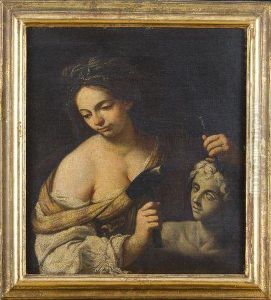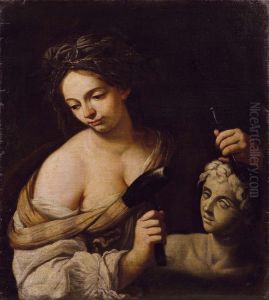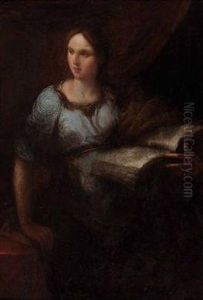Carlo Cornara Paintings
Carlo Cornara was an Italian painter and architect of the Baroque period, though he is not among the most widely recognized artists from this era. Born in 1605 in Milan, Cornara was part of the Lombard school of painting, which was influenced by the naturalistic styles and the dramatic use of light and shadow that were characteristic of the period.
Cornara's work as a painter was largely influenced by the Milanese artistic environment and by the works of artists such as Caravaggio, whose style had a profound impact on the Baroque movement. Cornara's own style would have reflected the shift towards dynamism, theatricality, and emotional intensity that defined Baroque art. His paintings would typically have depicted religious themes, a common subject matter for artists of his time, as the Catholic Church was a major patron of the arts during the Counter-Reformation, commissioning works that were meant to inspire devotion and awe.
Despite his activities in the realm of painting, Cornara might be more accurately described as a minor figure in the history of art, as there is limited documentation and scholarly work on his life and oeuvre. This scarcity of information can make it challenging to construct a detailed biography or to attribute works to him with certainty. It is likely that he worked on commissions for local churches and patrons, contributing to the rich tapestry of Baroque art in Italy without achieving the fame of his contemporaries like Bernini or Borromini.
Cornara's death in 1673 marked the end of his contributions to the Baroque movement. Unfortunately, due to his relative obscurity, the details of his life and works have not been preserved as prominently in the annals of art history. His legacy, if it has endured, would be as part of the broader narrative of the Baroque period, contributing to the collective efforts of artists who defined this exuberant and expressive era in European art.


